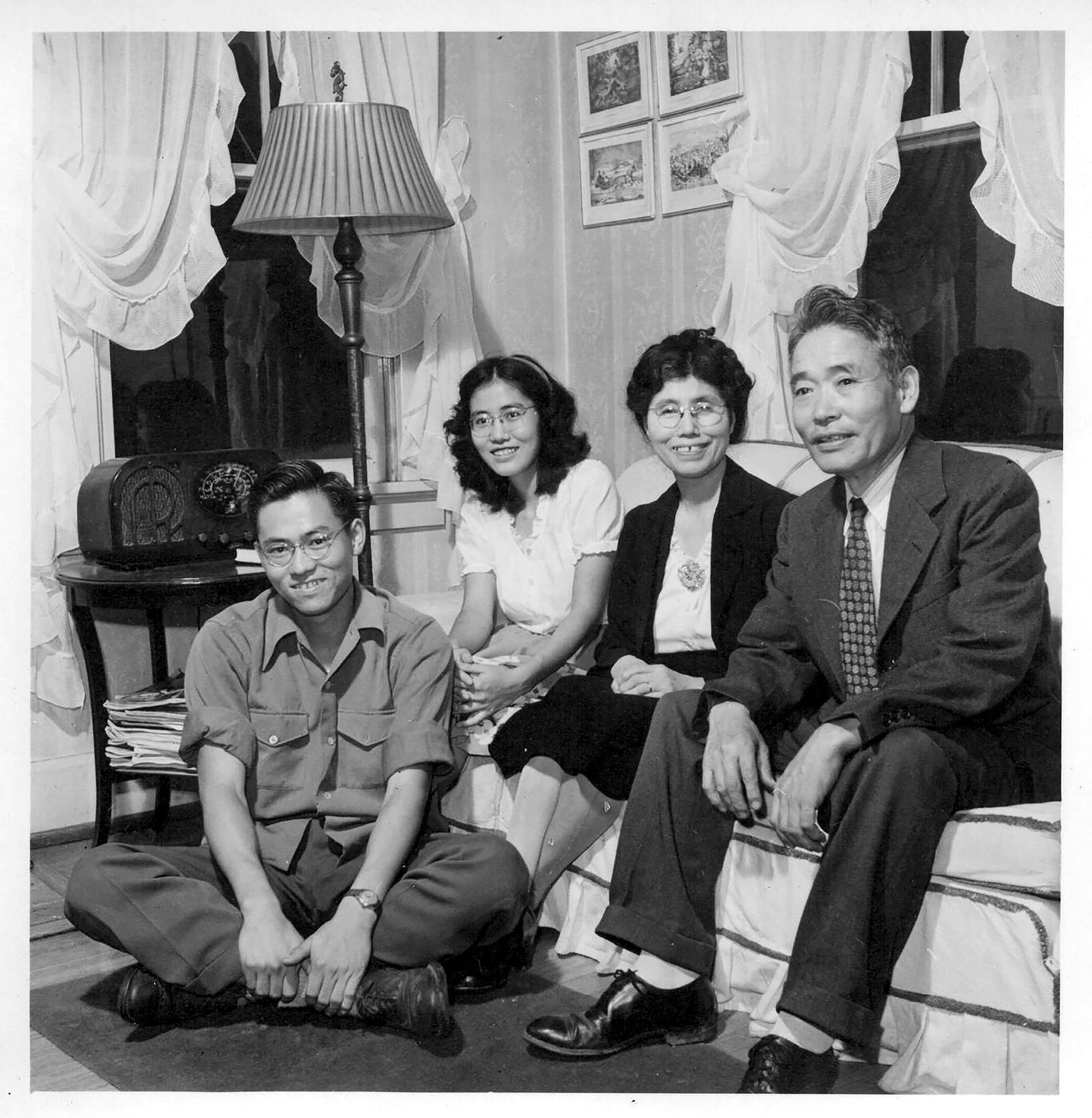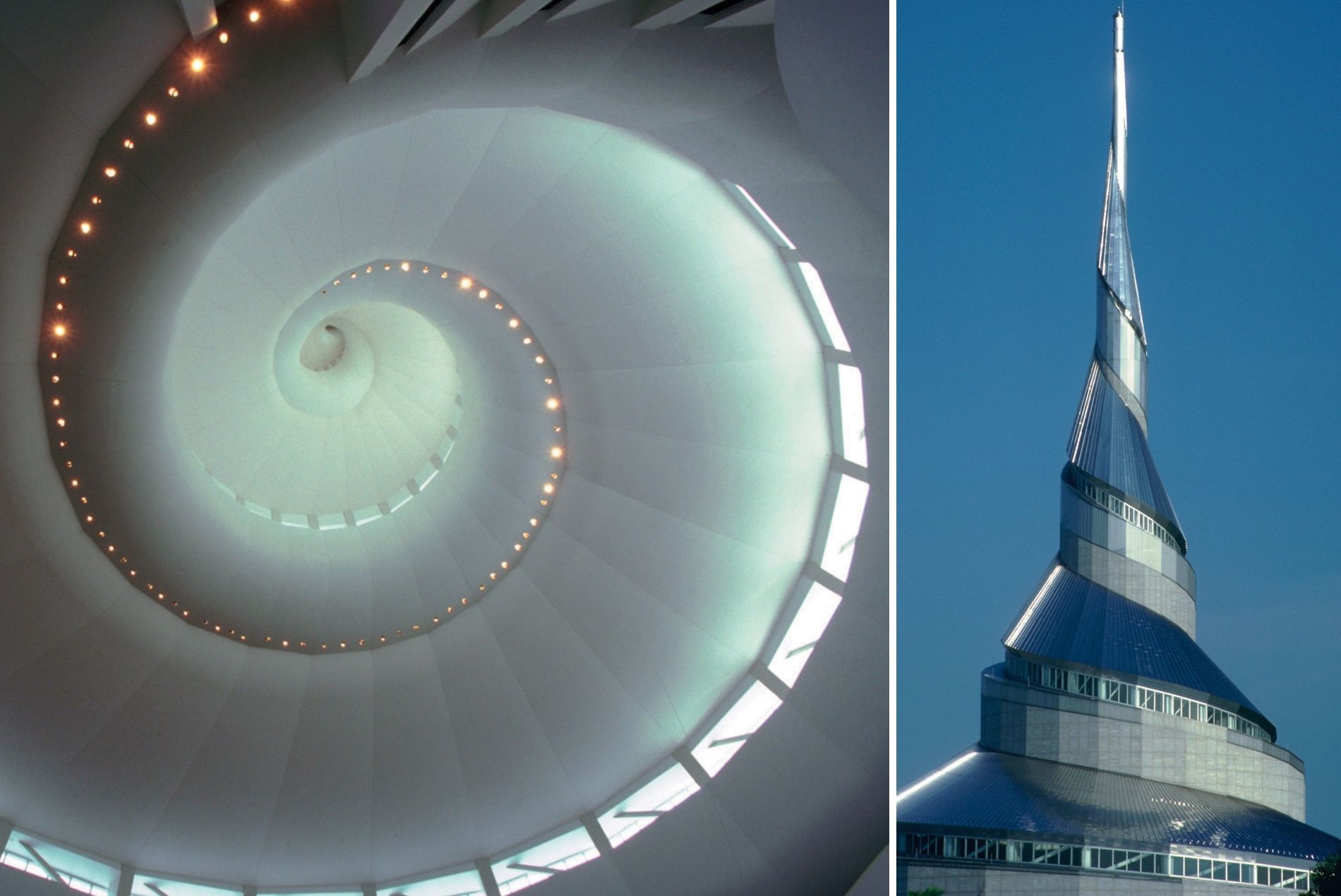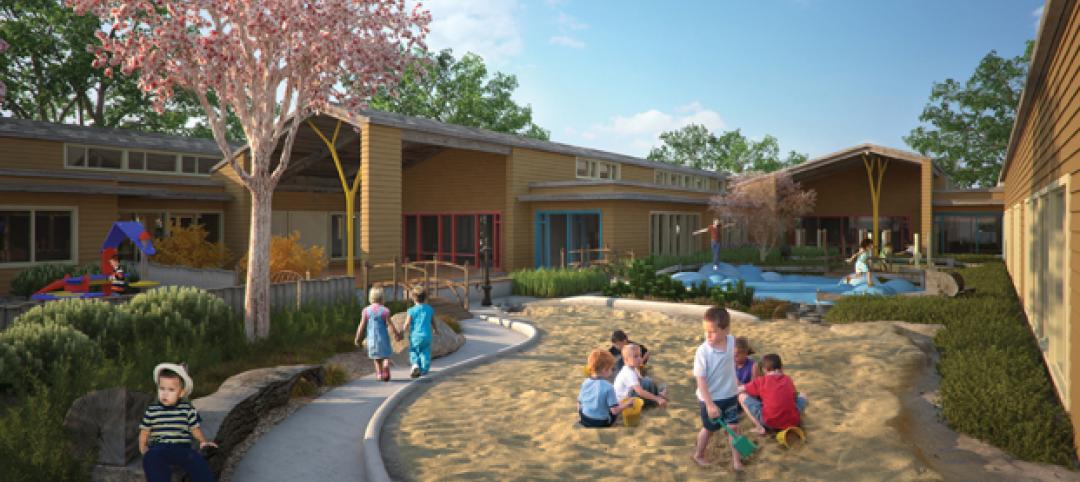Gyo Obata, FAIA, architect and Founding Partner of HOK, passed away on March 8. He was 99.
Obata, in partnership with George F. Hellmuth and George Kassabaum, built HOK from a regional, St. Louis-based architectural practice into a global design, architecture, engineering, and planning firm.
His career spanned six decades and included numerous iconic projects, including:
- Priory Chapel at Saint Louis Abbey, Creve Coeur, Mo. (1962)
- The Galleria in Houston (1970)
- Dallas/Fort Worth International Airport (1973)
- Bristol-Myers Squibb Campus, Princeton, N.J.(1973)
- National Air and Space Museum in Washington, D.C. (1976)
- King Khalid International Airport in Riyadh, Saudi Arabia (1983)
- King Saud University in Riyadh (1984)
- Community of Christ Temple, Independence, Mo. (1994)
- Japanese American National Museum Pavilion in Los Angeles (1998)
Statement from HOK:
Gyo was one of three principals who built HOK from a regional, St. Louis-based architectural practice into one of the world’s most respected global design, architecture, engineering and planning firms. His distinguished career spanned six decades. From the time of his retirement in 2012 and continuing into 2018, Gyo maintained an office in HOK’s St. Louis studio, where he regularly served as a design advisor to his colleagues.
“Gyo’s extraordinary career at HOK continued into his 90s, and he served as a mentor to several generations of designers including myself,” said HOK Chairman and CEO Bill Hellmuth, FAIA. “As an example to all of us, he led HOK to become the largest architecture-engineering firm in the United States while never abdicating his role as a designer of significant projects.”
Underpinning Gyo’s pioneering design approach was a fundamental belief that each project must be approached without preconceptions and designed to serve the needs, values and aspirations of the people and community it serves. Rather than imposing his will upon a project, Gyo paid close attention to the needs expressed by clients and then let the project guide the design of a building that would bring meaning and enjoyment to its visitors and inhabitants.

“Gyo embodied everything that’s honorable about the architectural profession,” said Bill Valentine, FAIA, HOK’s chairman emeritus. “Instead of designing for the fashions of the times or to make a personal statement, Gyo designed to improve lives. He was a kind, thoughtful man who developed warm, personal relationships with his colleagues and clients. People believed in him, which is an essential part of turning drawings into buildings.”
A strong proponent of sustainable design, Gyo’s work is characterized by an efficient use of materials and sense of harmony with its natural environment. “If you see architecture as a conversation with the surrounding environment, then Gyo is the ideal conversationalist,” wrote George McCue in a 1983 cover story on Gyo for St. Louis Magazine. “The greatest virtue his buildings possess is the great ‘courtesy’ they display toward their environment.”
Gyo was an advocate for a holistic approach to design in which architecture, engineering, interior design, planning and landscape architecture are fully integrated and delivered by a single multidisciplinary design team. This approach helped drive HOK’s ongoing expansion into new specialty practices, market sectors and geographic regions.
During his 50-year tenure as HOK’s design principal, Gyo shaped iconic, award-winning projects around the world. A few noteworthy examples include the Priory Chapel at Saint Louis Abbey, Creve Coeur, Missouri (1962); The Galleria in Houston (1970); Dallas/Fort Worth International Airport (1973); Bristol-Myers Squibb Campus, Princeton, New Jersey (1973); National Air and Space Museum in Washington, D.C. (1976); King Khalid International Airport in Riyadh, Saudi Arabia (1983); King Saud University in Riyadh, Saudi Arabia (1984); Community of Christ Temple, Independence, Missouri (1994); and the Japanese American National Museum Pavilion in Los Angeles (1998).

With an approach to life that regarded each day as a portal to possibility, Gyo also loved spending time with his family and friends, gardening, tennis, art, travel, reading, his dogs, birds, music, theater, opera, films and cooking.
Gyo Obata's Life of Design
Gyo was born in San Francisco in 1923. His parents, both artists from Japan, met in San Francisco after emigrating to the U.S. His father, Chiura Obata, introduced the classical sumi-e style of painting to the U.S. West Coast, and his mother, Haruko Obata, did the same for ikebana, the Japanese art of flower arranging. “Our house was like a studio, and was always filled with paintings and flowers,” said Gyo in the 2010 book by Marlene Ann Birkman: Gyo Obata: Architect | Clients | Reflections. “My parents were both great teachers and taught me life’s most basic lesson: to listen very carefully.”
Gyo was 18 when the Japanese attacked Pearl Harbor and an anti-Japanese hysteria swept the United States. He enrolled in the architectural program at the University of California, Berkeley in 1942, but his education was interrupted during his freshman year by the internment of approximately 117,000 people of Japanese ancestry in the U.S. The night before his parents, brother and sister were relocated to an internment camp in Northern California, Gyo boarded a train to St. Louis to continue his architectural training at Washington University, which at the time was one of the only U.S. universities that would accept Japanese-American students. His father had secured special permission from the local provost marshal for him to leave the region.

He earned a Bachelor of Science in Architecture from Washington University in 1945 before continuing his architectural education at Cranbrook Academy of Art in Michigan. There he studied under master Finnish architect Eliel Saarinen, the father of Eero Saarinen, architect of the iconic Gateway Arch in St. Louis. In 1946, Gyo received a Master of Architecture and Urban Design.
“Saarinen’s teachings had an enormous positive influence on me,” said Gyo in a 2006 interview. “He emphasized the relationship of every element in a design and the importance of integrating them, from the smallest through the largest. Since then, I have always been interested in working on large-scale projects where many smaller parts must fit within the greater whole.”
After serving with the U.S. Army in the Aleutian Islands off the coast of Alaska, Gyo joined the Chicago office of architecture firm Skidmore, Owings & Merrill in 1947 as a designer.

In 1951, the St. Louis architecture firm Hellmuth, Yamasaki & Leinweber (HYL) recruited him as a design assistant to Minoru Yamasaki, an architect who would later design the World Trade Center in New York City. Gyo’s collaborations with Yamasaki included the design of the signature passenger terminal at St. Louis Lambert International Airport that opened in 1956. Credited for helping change the visual vocabulary of airports and being the forerunner of modern airport terminals, the building features aerodynamic lines and a series of low-slung arches that celebrate the concept of flight.
When HYL reorganized in 1955 as Hellmuth, Obata & Kassabaum (HOK), Gyo, at the age of 32, was appointed principal of design. Together with George Hellmuth (1907-1999), who led marketing and business development, and George Kassabaum (1921-1982), who oversaw production, the partners pioneered a tripartite business model that would come to define the modern multidisciplinary architecture practice.
Related Stories
| Mar 11, 2011
Holiday Inn reworked for Downtown Disney Resort
The Orlando, Fla., office of VOA Associates completed a comprehensive interior and exterior renovation of the 14-story Holiday Inn in the Downtown Disney Resort in Lake Buena Vista, Fla. The $25 million project involved rehabbing the hotel’s 332 guest rooms, atrium, swimming pool, restaurant, fitness center, and administrative spaces.
| Mar 11, 2011
Renovation energizes retirement community in Massachusetts
The 12-year-old Edgewood Retirement Community in Andover, Mass., underwent a major 40,000-sf expansion and renovation that added 60 patient care beds in the long-term care unit, a new 17,000-sf, 40-bed cognitive impairment unit, and an 80-seat informal dining bistro.
| Mar 11, 2011
Research facility added to Texas Medical Center
Situated on the Texas Medical Center’s North Campus in Houston, the new Methodist Hospital Research Institute is a 12-story, 440,000-sf facility dedicated to translational research. Designed by New York City-based Kohn Pedersen Fox, with healthcare, science, and technology firm WHR Architects, Houston, the building has open, flexible labs, offices, and amenities for use by 90 principal investigators and 800 post-doc trainees and staff.
| Mar 11, 2011
Blockbuster remodel transforms Omaha video store into a bank
A former Hollywood Video store in Omaha, Neb., was renovated and repurposed as the SAC Federal Credit Union, Ames Branch. Architects at Leo A Daly transformed the outdated 5,000-sf retail space into a modern facility by wrapping the exterior in poplar siding and adding a new glass storefront that floods the interior with natural light.
| Mar 11, 2011
Historic McKim Mead White facility restored at Columbia University
Faculty House, a 1923 McKim Mead White building on Columbia University’s East Campus, could no longer support the school’s needs, so the historic 38,000-sf building was transformed into a modern faculty dining room, graduate student meeting center, and event space for visiting lecturers, large banquets, and alumni organizations.
| Mar 11, 2011
Mixed-income retirement community in Maryland based on holistic care
The Green House Residences at Stadium Place in Waverly, Md., is a five-story, 40,600-sf, mixed-income retirement community based on a holistic continuum of care concept developed by Dr. Bill Thomas. Each of the four residential floors houses a self-contained home for 12 residents that includes 12 bedrooms/baths organized around a common living/social area called the “hearth,” which includes a kitchen, living room with fireplace, and dining area.
| Mar 11, 2011
Oregon childhood center designed at child-friendly scale
Design of the Early Childhood Center at Mt. Hood Community College in Gresham, Ore., focused on a achieving a child-friendly scale and providing outdoor learning environments.
| Mar 11, 2011
Guests can check out hotel’s urban loft design, music selection
MODO, Advaya Hospitality’s affordable new lifestyle hotel brand, will have an urban Bauhaus loft design and target design-, music-, and tech-savvy guest who will have access to thousands of tracks in vinyl, CD, and MP3 formats through a partnership with Downtown Music. Guest can create their own playlists, and each guest room will feature iPod docks and large flat-screen TVs.
| Mar 11, 2011
Construction of helicopter hangars in South Carolina gets off the ground
Construction is under way on a $26 million aviation support facility for South Carolina National Guard helicopters. Hendrick Construction, the project’s Charlotte, N.C.-based GC, is building the 111,000-sf Donaldson Hangar facility on the 30-acre South Carolina Technology & Aviation Center, Greenville.
| Mar 11, 2011
Texas A&M mixed-use community will focus on green living
HOK, Realty Appreciation, and Texas A&M University are working on the Urban Living Laboratory, a 1.2-million-sf mixed-use project owned by the university. The five-phase, live-work-play project will include offices, retail, multifamily apartments, and two hotels.

















